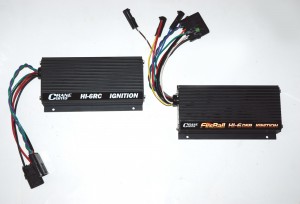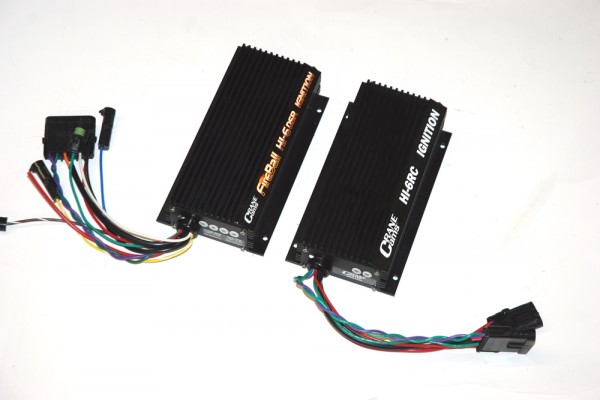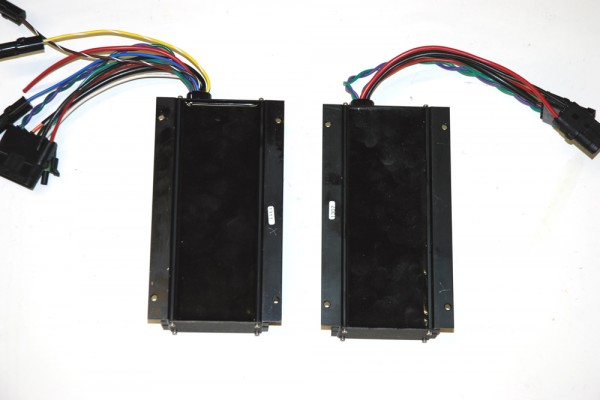 When the average hot rodder ponders a new ignition system, it’s not unusual to migrate toward the most common or publicized brands. While it’s understandable to focus on familiar brand names, there are more choices out there than you think.
When the average hot rodder ponders a new ignition system, it’s not unusual to migrate toward the most common or publicized brands. While it’s understandable to focus on familiar brand names, there are more choices out there than you think.
One of those lesser known options is Crane Cams. Believe it or not, the cam experts at Crane have also been building high quality ignition components for over 20 years. When you look at the overall spark control boxes Crane offers, they all look pretty much the same. Most are housed inside a finned aluminum shell to dissipate heat and feature a set of easily adjusted rotary switches. And most of the boxes incorporate “digital” technology.
What is digital technology and what does it mean for your ignition box? First, let’s take a look at the differences between analog and digital circuits—starting with the technical definitions (according to an electronics dictionary):
Analog Circuit: This is a circuit in which the output voltage and current values are considered significant over a continuum. Analog circuits may be used for such purposes as amplifying signals.
Digital Circuit: This is a circuit in which the output currents or voltages are interpreted as having one of several (often two) values, depending on which of a corresponding number of ranges they fall into. Such circuits implement logical operations or operations on representations of discrete numbers, often in binary form.
Consider this: When you look at a computer, you’ll find that it’s a device capable of performing a series of arithmetic or logical operations. A computer is distinguished from an adding machine (a good example is a simple hand held electronic calculator or even an ancient abacus) by being able to store a computer program. This program allows it to repeat operations, make “logical” decisions, and store and retrieve data without intervention from you.
Technically speaking, computers are classified as analog or digital.
An analog computer operates on continuously varying data. An analog computer represents data as physical quantities and operates on the data by manipulating the quantities. In a complex analog computer, continuously varying data is converted into varying electrical quantities and the relationship of the data is determined by establishing an equivalent relationship, or “analog,” among the electrical quantities. Although analog computers are commonly found in such forms as older electrical watt-hour meters, they largely have become obsolete for general-purpose mathematical computations and data storage by digital computers.
On the other hand, a digital computer (such as today’s common PC or laptop models) performs operations on what is called “discrete data.” Inside a digital computer, data is expressed in binary notation (or “numeration”). Essentially, this is a series of on-off conditions that represent the digits 1 and 0. A series of eight consecutive binary digits, or bits, is called a byte and allows 256 on-off combinations. Each byte can represent one of up to 256 alphanumeric characters. Mathematics and comparative operations can be performed on data represented in this way and the result stored for later use. Digital computers are used for things like desktop publishing, electronic games, scientific research, data processing and now, racecar ignition systems.
If you’re not into computers, you may have developed a headache by reading all that.
While you swallow your aspirin, we’ll give you another, less complicated way to look at the differences between digital and analog. Simply compare a good old-fashioned wristwatch with a sweep second hand and the LCD readout on something like your old VCR (remember the clock that kept blinking 12:00?). Both display time, but the wristwatch is constantly varying. As the second hand sweeps around the face of the wristwatch, the information that is displayed is constantly changing.
An analog system is like that old wristwatch in that it attempts to recreate the information as it actually happens. In contrast to the watch, the clock on your old VCR presents the same information but it’s in what’s called a “discrete demonstration.” In other words, it displays one piece of information at a time, taking the information and representing it as a series of changes, or “bits,” that are represented in code by zeros and ones. How does this translate to ignition systems?
A digital ignition system offers a number of advantages. It makes decisions based upon cold hard facts. If it receives a signal to do something, it does so immediately, so speed and accuracy are among the benefits offered by today’s sophisticated digital ignition systems. The bottom line: digital ignitions often deliver quicker, powerful, and more accurate spark at just at the right time. And it can repeat this process time and time again without compromise, so you get accurate spark over a broad rpm range without over-revving. Check out the slideshow below to see how Crane Cams incorporates digital circuitry into two of its more popular ignition boxes: the HI-6RC and HI-6DSR.









Good article! Keep them coming.
I have had a crane digital box in my car for 20 yrs………never a problem…..10 second pump gas small block street car.